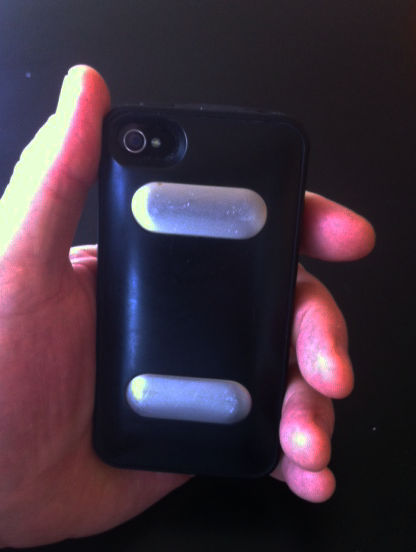 |
| The back of my demo AliveCor ECG iPhone 4s Case |
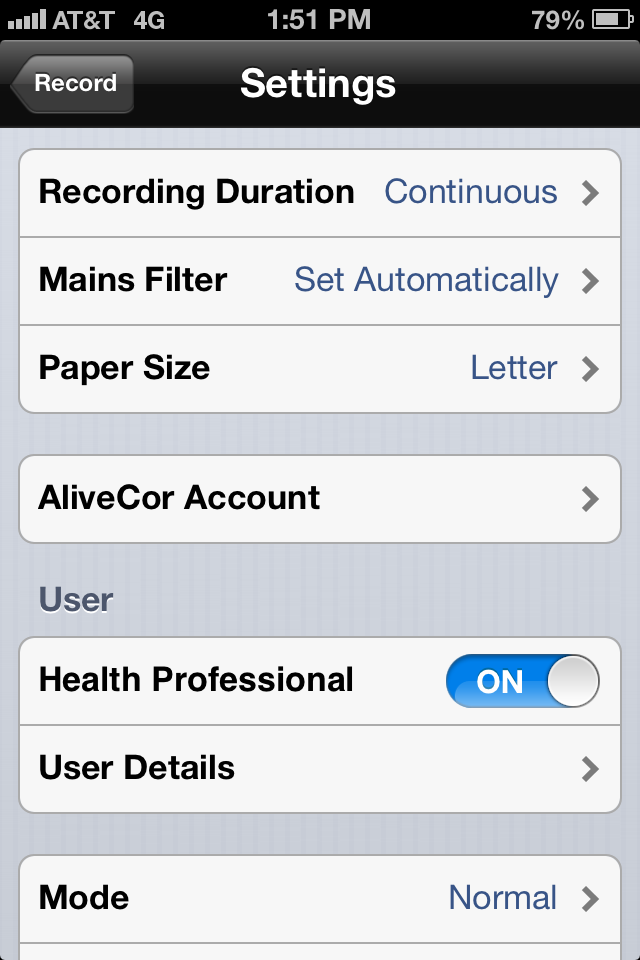 |
| AliveCor ECG Setup Screen (beta) |
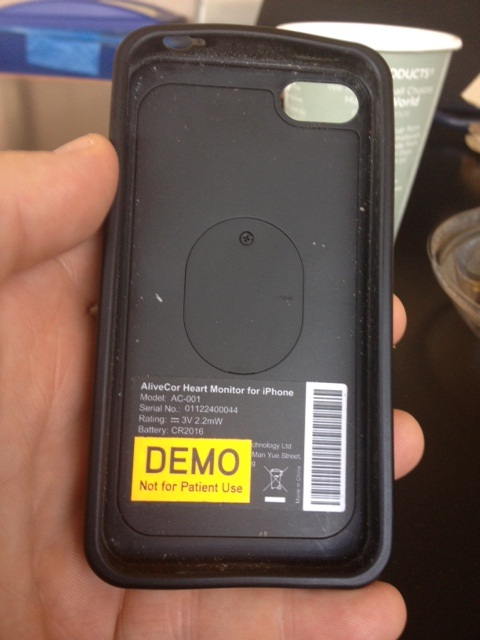 |
| Inside of My Demo AliveCor iPhone Case Note: no wires. |
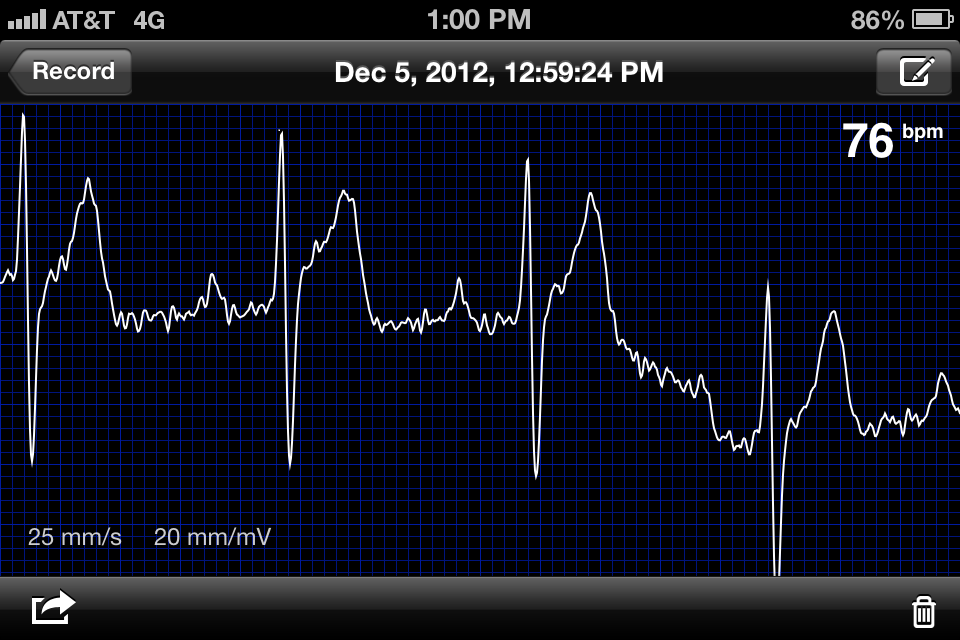 |
| My unretouched ECG recorded with my hands today (yep 1st degree AV block!) |
Lead I of the standard EKG was recorded with the left and right hand holding the device with the left and right hand fingertips touching the electrodes on the back of the case. It was important to hold the device with the iPhone's round button to the right to assure the device did not record an inverted lead I.
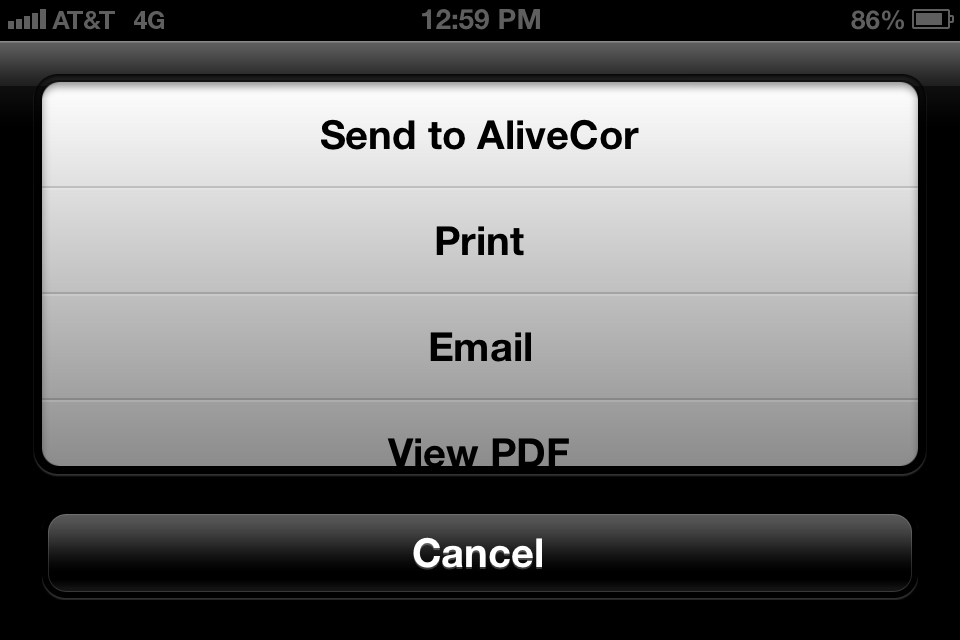 |
| Options for sending tracings (beta) |
Physician Reactions
Without exception, every physician I showed this device recognized this device as a compliment to the doctor's stethoscope. It was a uniform hit as they gazed in amazement at the device's ability to record their real-time ECG. I found this device was capable of instantly differentiating the irregular rhythm of atrial fibrillation from the irregular rhythm caused by premature atrial or premature ventricular beats or even atrial flutter with variable AV conduction. Some care was required to get noise-free tracings or to obtain the appropriate EKG vector on the chest with which to identify lower-amplitude atrial arrhythmias. But most limb leads can be replicated by the device (hold the R electrode with the hand and apply the left electrode to the knee to see lead II, for instance), or angle the leads in different directions on the patient's chest to obtain a new QRS vector. (Obviously, the angle the electrodes were placed on the chest to acquire a particular limb lead requires some rudimentary knowledge of ECG basics.)
Patient Reactions
Perhaps the most interesting aspect of this device is what happened when it is placed in the hands of patients and friends unfamiliar with ECG tracings. Their first reaction as they sit transfixed at their own ECG tracing dancing across the screen is "Cool! .... But what does it MEAN?" Then comes "Am I okay?" And then of course when tracings are compared between friends: "Why is my heart rate so much faster/slower than his/hers?" Or you might hear: "Man, I'm out of shape!" And if the device occasionally had difficulty calculating the heart rate from a noisy tracing, three little dashes would appear instead, leading the person to ask, "Does this mean I'm dead?" Any one of these reactions could came from generally healthy people who have never had a major medical problem.
What was more interesting to me was the nuanced reaction I noticed from patients who had had a complex medical history before but were seeing this device outside a medical facility for the first time. When they encountered this device in a social setting, it was common that these patients refused to have their tracing performed "for fun" for fear they might be sent packing to the nearest medical establishment. IT became immediately clear that discretion should be exercised if the device is to be passed about at cocktail parties. (Yes, doctor, not everyone wants to see your cool gizmo.) Hence, it appears that deploying this device on the general public has some challenges ahead, but I suspect it will come: gradually at first, then more generally. It is clear that this really does take an understanding of ECGs to use effectively, so doctors (or techs) familiar with ECGs will have to be involved. Liability and responsibility for reading remains a thorny issue one the device is released to the public. I suspect these are relatively easy issues to resolve for AliveCor going forward.
Still, for doctors and medically-savvy patients, this device is a game-changer. The number of ECG tracings obtained in clinics will probably diminish one day as this device enjoys a wider distribution amongst physicians since it doesn't require a special technician or equipment to obtain much of the information doctors need to manage their arrhythmia patients. But caution with this single lead ECG device should be maintained, too. Because multiple ECG leads are not collected simultaneously, the device could miss the subtle findings of a heart attack in locations remote from the there the single tracing is collected by the device. Still, for routine rhythm analysis, this device has huge potential for time-savings, practical rhythm interpretation, and maybe even the potential to provide for considerable technical health care cost savings.
-Wes
PS: I have no commercial interest in AliveCor (darn it).
The AliveCor iPhone ECG Case website
1 comment:
I could not get lead III to work on my Alivecor. I held one electrode in my left hand and put the other electrode to my left thigh/knee. The tracing was just garbage. Also any way to reproduce leads R, L, F?
Mary T, MD
Post a Comment